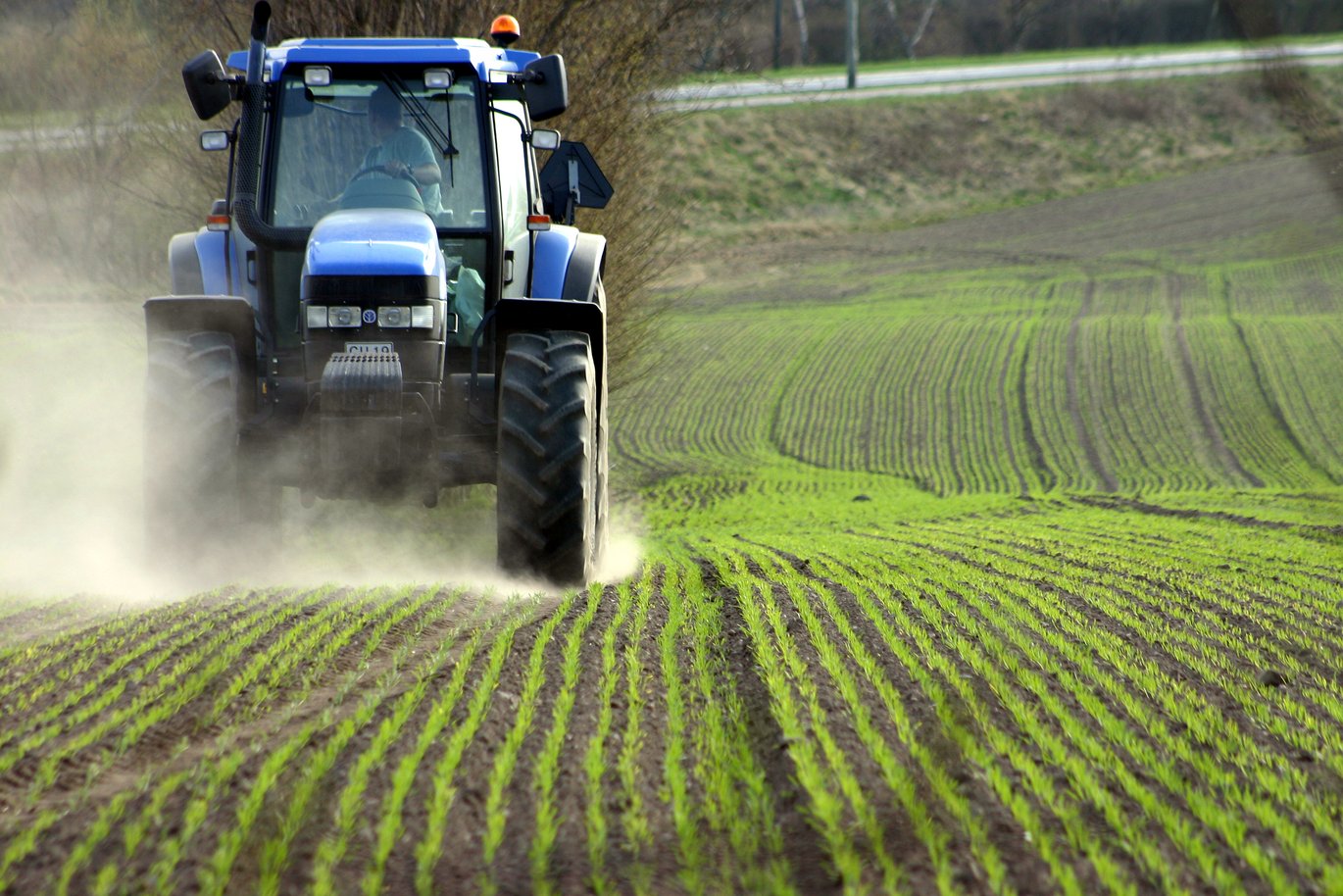New project will reduce soil compaction and optimize driving in the field
A new project supported by the Green Development and Demonstration Program (GUDP) will develop a system that can help farmers map the most optimal route in the field, so that the soil is less compacted and emissions of both nutrients and greenhouse gases are reduced, while crop yields increase.

Heavy machinery in the field can compact the soil, which damages the soil's ability to absorb both water and nutrients. It affects the growth of the crops, and in the end it can negatively affect the yield of the field. In addition, the risk of nitrogen leaching and emissions of nitrous oxide, which is a powerful greenhouse gas, increases. In other words, soil compaction is a major problem for both the environment and agriculture, and climate change means that in the future it will be even more important that the Danish fields can handle large amounts of precipitation, which they cannot if the soil is heavily compacted due to heavy machinery.
Limits the climate impact
In a new GUDP project, researchers from the Department of Agroecology and the Department of Electrical and Computer Engineering at Aarhus University will reduce soil compaction so that less nitrogen, phosphorus, and pesticides are leached, less nitrous oxide is emitted, and more carbon is stored. The project is called "SOLGRAS - Optimization of field traffic to ensure soil protection and efficiency: the case of grass harvest." Here, the researchers will develop a system based on the harvesting of grass. The starting point is thus only on a single cultivation system, but the project group expects to be able to use the same technology to optimize driving with other heavy loads, such as harvesting of other crops or transport of manure.
"Grass is very sensitive to harmful soil compaction, and is harvested many times during a year, so we can test our solution several times during the project," Senior Researcher Mathieu Lamandé from the Department of Agroecology explains. He is project manager for SOLGRAS. “We estimate that our project can limit the climate impact of hay grass by a total of 360 kilos of CO2 equivalents per hectare each year. If the system is extended to 160,000 hectares of Danish agricultural land, it will produce 57,600 tonnes of CO2 equivalents per year. At the same time, we expect that more sustainable driving in the field can increase the farmer's grass yield by 20 percent, ”he continues.
A side benefit of optimal driving in the field is savings in fuel, which in turn is good for the environment and for the farmer.
It has to be easy
If the project is to succeed, it is important that it is easy for the farmer to optimize his driving in the fields. There are already many different technologies, but according to the researchers, it would be appropriate to develop a system where the different technologies can be combined. An example might be automatic tire pressure systems. Tire pressure plays a major role in soil compaction and fuel consumption. Therefore, it is one of the technologies that the project wants to include.
The intention is that the new system will support the farmer in deciding the most suitable route in the field. By comparing different journeys, it will be possible to determine a route that reduces the risk of soil compaction, saves on fuel and working time as much as possible.
The project will produce data that can be used to automate the system and guide the farmer. The data will be a combination of data from satellites and a soil database. It can be used to produce high-resolution digital soil maps. In addition, data for topography and weather will also be included in the new system.
The system is based on a model for assessing the risk of soil compaction from an already completed GUDP project called COMMIT. From this, the researchers will further develop and specialize the system with more accurate data on soil, climate, and machine type. There are many different factors that come into play when it comes to driving in the field. The machines have different sizes, weights, and traction. The tire pressure depends on the weight of the load. Researchers from the Department of Electrical and Computer Engineering will be involved in developing algorithms for optimizing the machines' routes.
More information about the project | |
| Collaborators | Department of Agroecology and Department of Electrical and Computer Engineering at Aarhus University, SAGRO and AGCO. - The new system will be integrated into an existing system from ACGO. The consulting company SAGRO is responsible for the contact to farmers and machine stations, so that users can give feedback on that system, and so that in the future the machine stations can guide the farmers in the right machines to use in their fields to reduce the risks of soil compaction. |
| Funding | The project is funded by the Green Development and Demonstration Program (GUDP) |
| Amount granted | DKK 10,051,350 |
| Project period | 01.09.2021 – 31.08.2024 |
| Read more | Read more about the project on GUDP's website here. (in Danish only) |
| Contact | Senior researcher and project manager Mathieu Lamandé, Department of Agroecology, Aarhus University. Tel .: +4522240870 or email: mathieu.lamande@agro.au.dk |
